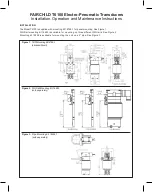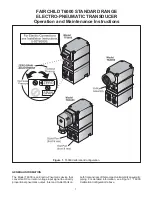
The channel layout indicates that the left four fibers are Transmit, and must reach the opposite transceiver
Receive channels (and in proper channel order).
Optical parameters
This guide provides average transmit and receive power ranges for transceiver modules.
Transmit power
Transmit power is the power at which the transmitter of an optical transceiver module transmits optical signals, in
dBm.
Receive power
Receive power is the power at which the receiver of an optical transceiver module receives optical signals, in
dBm.
Use of attenuators
Transceivers are designed to transmit light pulses at a power level that accounts for loss in the fiber optic cabling,
and meets the receiver input thresholds of the link partner optical transceiver.
If you are using a fiber cable with less light loss than expected (for example, in a test environment and you do not
have a 40km spool of SMF available), use attenuators to affect the transmit level to within the receive sensitivity of
the other transceiver -- you will need to condition both fibers (sends in both directions). If you do not, you risk
overdriving the Receive end and permanently damaging the transceiver. For example, a 40GER4 has a highest
transmit level of 4.5dBm, but the Receive Sensitivity can be no higher than -4.5dBm. That means that there must
be at least a 9dBm loss on the light level to be within the standards (4.5 - (4.5) = 9dBm required).
Copper transceiver modules
Copper transceiver modules transmit signals over Category-5 unshielded twisted pair (UTP). UTP transmission
cover shorter distances than fiber transmission and can be used in small-sized networks only.
Copper transceivers are supported in 1G SFP and 10G SFP+ ports where listed in the Support Matrix tables.
Transmission distance
Through UTP cables, signals can be transmitted over a distance of 100 m (328.08 ft.) only. This behavior occurs
because signals attenuate during transmission through the UTP cables.
Attenuation refers to the dissipation of the power of a transmitted signal as it travels over a cable. Attenuation
occurs because signal transmission suffers certain resistance from the cable, which weakens the signals as they
travel over the cable. When signals are transmitted over a long distance, signal strength decreases significantly,
causing the signal-to-noise ratio to drop below the accepted level. This decrease makes it impossible to
distinguish between signals and noise, which results in data loss.
Patch panel and punch down blocks also affect attenuation; that is, they can be a source of issues resulting in
shorter distances or data loss.
Chapter 1 Overview
11












































